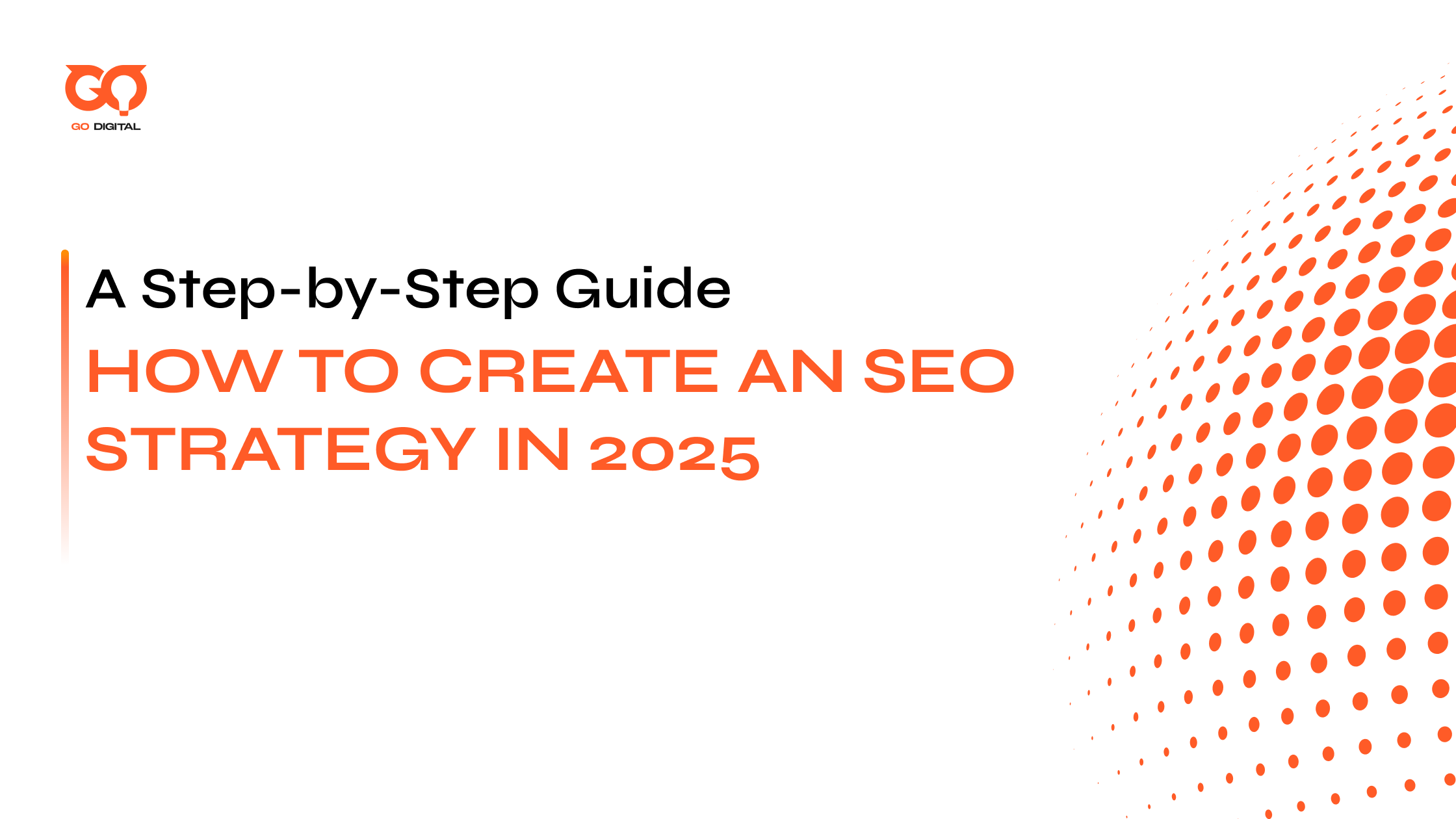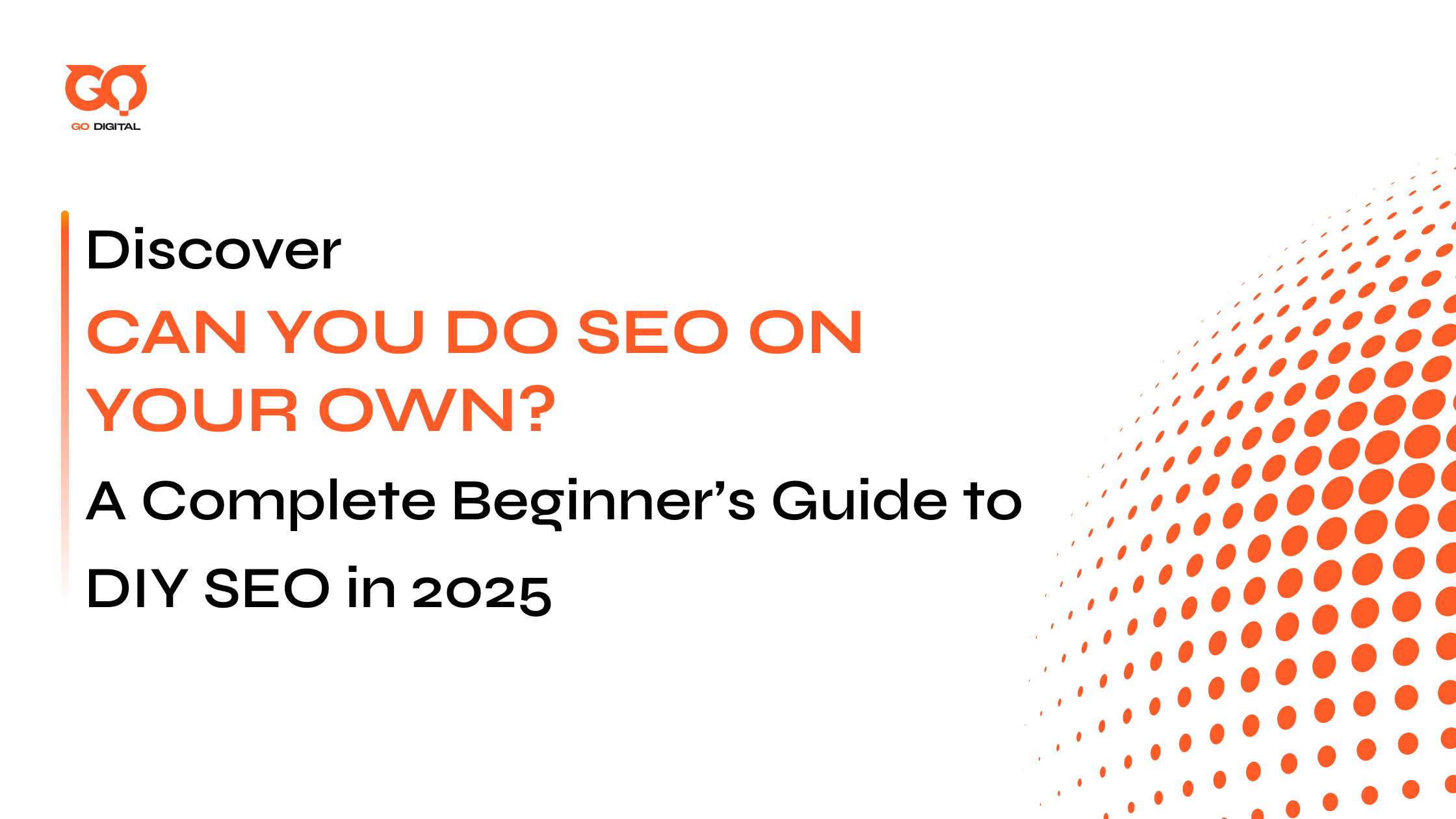SEO isn’t magic. It’s a science, and like any science, it requires a clear plan. That plan is your SEO strategy. And if you’re serious about attracting organic traffic and growing your business, it’s one of the most important things you can build.
In this guide, I’m going to walk you through the exact steps on how to create an SEO strategy from scratch. I’ll share the secrets I’ve learned from years in the industry, so you can build a roadmap that gets you real, measurable results.
What Is an SEO Strategy and Why It Matters
An SEO strategy is a detailed plan you follow to improve your search engine rankings and attract more organic traffic. Think of it as your master blueprint. It’s not just about doing random tasks, it’s about aligning every action with your ultimate business goals.
At its core, an SEO strategy organizes your content into topic clusters with clear internal links, supported by a technical setup that allows search engines to crawl and index everything efficiently.

Why SEO strategy is crucial for ranking and organic traffic growth
According to BrightEdge, 68% of online experiences begin with a search engine and organic search drives over 53% of all trackable website traffic. That’s a massive audience you can’t afford to miss. Without a defined strategy, you risk missing out on your largest potential growth channel.
And it’s not just about keywords anymore. Google’s algorithms now prioritize user experience, mobile-first design, and content quality. To win in 2025, your SEO strategy has to balance technical performance with genuine value for readers.
Setting Clear SEO Goals Aligned with Your Business Objectives
Before writing a single blog post or optimizing a page, you need to know what success looks like. Traffic by itself isn’t enough. Your SEO should connect directly to measurable business results.

How to set SMART SEO goals aligned with business outcomes
How to set SMART SEO goals
Use the SMART framework: Specific, Measurable, Achievable, Relevant, and Time-bound:
- Specific: Clearly define what you want to achieve. Instead of “improve SEO,” set a target like “increase blog traffic from non-branded keywords.”
- Measurable: Ensure you can track progress with metrics. Tools like Google Analytics and Search Console make it possible to measure clicks, impressions, CTR, and conversions.
- Achievable: Your goals should be ambitious but realistic. A brand-new site won’t outrank Amazon in a month, but it could rank for niche long-tail keywords within six months.
- Relevant: Align SEO targets with broader business objectives. If your company is pushing online sales, your SEO should focus on product visibility, not just blog traffic.
- Time-bound: Set deadlines. Without them, goals lose urgency.
For example, let’s say your business wants to increase online sales by 20% in the next year. Your SEO goal could boost organic traffic to product pages by 30% within 12 months by targeting transactional long-tail keywords and optimizing product descriptions.
Targeting SEO efforts
Decide what matters most for your company:
- Lead generation (opt-in content, demo requests)
- Revenue (eCommerce transactions, bookings)
- Brand awareness (informational content, top-of-funnel visibility)
- Local search (Google Business Profile optimization, location pages)
Prioritizing keyword groups that align with business outcomes
Not all keywords are created equal. While it may be tempting to chase after high-volume terms, the real value lies in keywords that map directly to your business goals. This means focusing on the intent behind the search query, not just the number of searches.
The key is to group keywords based on their role in the customer journey:
- Top-of-funnel (awareness): Informational queries like “how to organize remote teams” that attract readers researching solutions.
- Mid-funnel (consideration): Comparative terms like “Trello vs Asana vs [Your Brand]” where users are evaluating options.
- Bottom-funnel (decision): Transactional terms like “buy project management software” or “sign up for free trial.”
By prioritizing keywords that directly support your core objectives whether it’s lead generation, subscription growth, or revenue expansion, you ensure your SEO strategy isn’t just about traffic but about tangible business results.
In-Depth Keyword Research to Match Search Intent
Keyword research is the foundation of everything. You need to know what your audience is searching for and why they are searching for it.
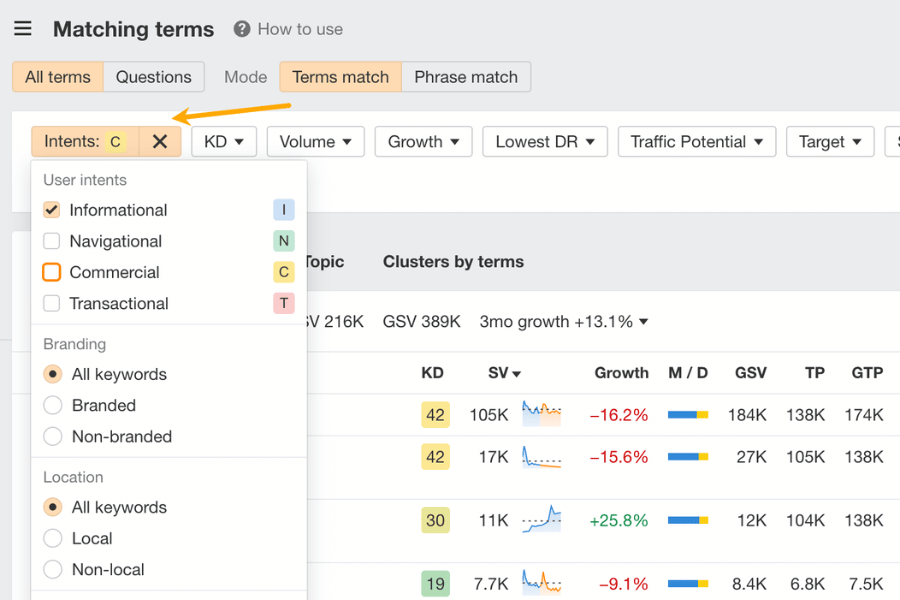
Keyword research techniques to build an SEO strategy that matches user intent and drives qualified traffic
Techniques to find relevant keywords
- Look for long-tail keywords with specific intent (e.g., affordable CRM for startups).
- Collect question-based queries from People Also Ask boxes and forums.
- Use clustering to group related terms under a pillar topic.
Using multi-platform keyword discovery
Search behavior goes beyond Google. Check:
- Google Autocomplete for quick ideas.
- YouTube for video search intent.
- Reddit and niche forums for real-world phrasing.
- AI tools for content gap analysis.
Recommended keyword research tools
- Semrush and Ahrefs for difficulty vs volume analysis.
- Google Keyword Planner for CPC signals.
- HubSpot Blog Ideas Generator for content inspiration.
Pro tip: The top-ranking page on Google captures an average 27.6% of clicks – moving from position #5 to #1 can triple your traffic. This makes proper keyword targeting critical.
Competitor Analysis and SERP Features Optimization
Never ignore your competition. Your competitors are already giving you clues about what works. Study them before creating your own plan.

Competitor SEO analysis and SERP optimization strategies to refine your SEO plan
Identifying top competitors
Search your target keyword, look at the top-ranking pages and list the domains that consistently rank in the top 10. Export their high-performing content using tools like Ahrefs.
- Who are your top organic competitors? They might not be your direct business competitors. They’re the websites that consistently rank for the keywords you want.
- What kind of content are they creating? Look at their content length, subheadings, and topics.
- How are they building links? Use a backlink analysis tool to see who is linking to them. This can give you ideas for your own link building.
Understanding and leveraging SERP features
Search results today aren’t just ten blue links. Featured snippets, People Also Ask boxes, knowledge panels, and video carousels dominate page one. Nearly 60% of searches end without a click, which means visibility within these features is often more important than traditional rankings.
Finding content gaps
Ask: What are my competitors not covering? If they rank for “best email tools,” but no one has written about “best email tools for small nonprofits,” that’s your opportunity.
Creating High-Quality, Authority-Building Content
Content is the engine that powers SEO but only if it’s written for humans first.
Forget keyword stuffing
Write clear, engaging, and helpful content. Search engines now measure user behavior: bounce rates, dwell time, and engagement.
Focus on E-E-A-T
Google evaluates content based on Experience, Expertise, Authoritativeness, and Trustworthiness. Add author bios, cite credible sources, and show real-world experience.
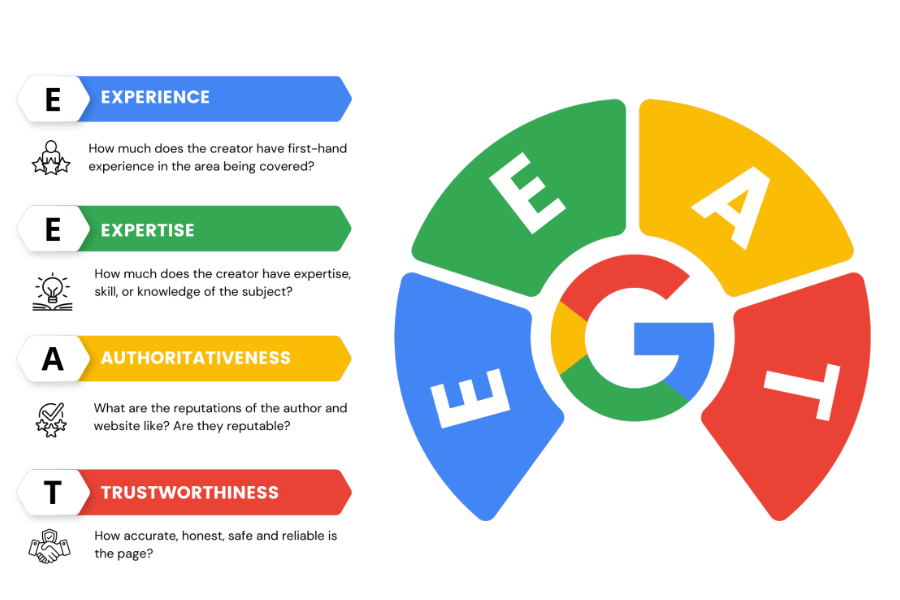
Content creation tips for SEO strategy focusing on high-quality, authority-building content
Structuring content with clear headings
Use H2s and H3s to guide the reader. Integrate keywords naturally. A well-structured page helps both users and search engines.
Building topic clusters
Start with a pillar page (e.g., “Complete Guide to CRM”) and link to related cluster posts (e.g., “How to Choose a CRM for Startups,” “CRM vs Project Management Software”).
Technical SEO and On-Page Optimization Essentials
This is where you make sure your website is a well-oiled machine that Google can easily crawl and understand. On-page and off-page SEO starts right here.

Key technical SEO and on-page optimization steps for building a solid SEO strategy
Improving page speed
Compress images, enable caching, and clean up unused code. Google research shows that 53% of mobile visitors abandon sites that take longer than 3 seconds to load.
Ensuring mobile-friendly design
Google now uses mobile-first indexing, which means they primarily use the mobile version of your site for ranking. If your site isn’t mobile-friendly, you’re losing traffic.
Optimizing core on-page elements
- Meta titles and descriptions (click-through impact)
- Clean URL structure
- Headers with keyword alignment
- Alt attributes for images (accessibility + SEO)
Implementing sitemap and robots.txt
Submit an XML sitemap to Search Console and ensure robots.txt isn’t blocking important content. For a deeper audit process, read this technical SEO audit guide.
Building Internal Links and Effective Backlink Strategies
Links remain one of the strongest ranking signals. But not all links are equal. Use the pillar-cluster model so authority flows from main guides to supporting articles. Keep anchor text descriptive but natural.
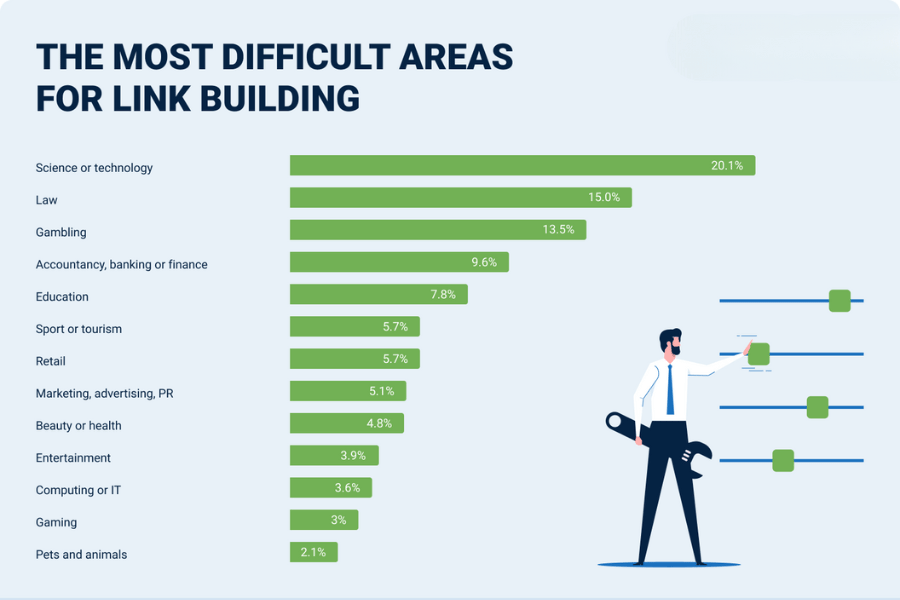
Link building and some difficult areas you need to know when creating an SEO strategy
Internal Linking: Create a strong internal linking structure. It helps search engines discover new content and passes authority from high-ranking pages to new ones. Link to your other relevant articles naturally within your text, like this article on why an SEO audit is important.
Backlink Strategies: Earning high-quality backlinks from other websites is key for off-page SEO. The best backlinks come from relevance and authority. Tactics include:
- Guest posting on industry blogs
- Collaborating with partners or influencers
- Publishing original research or surveys that others want to cite
Monitoring backlink quality
Ahrefs reports that domains with a high number of unique referring domains rank significantly better. Focus on steady growth rather than buying bulk links.
Monitoring SEO Performance and Continuous Improvement
SEO is never “set and forget.” Continuous improvement separates winning sites from stagnant ones.

Tracking SEO performance with tools like Google Analytics, Search Console, and rank trackers
Tracking performance
Use:
- Google Analytics and GA4 for traffic and conversions
- Search Console for impressions, clicks, CTR, and indexing
- Rank trackers for keyword positions
Regularly updating content
Sometimes all you need is a title tweak, image update, or new stat to refresh rankings. For aging posts, consider full rewrites.
Developing a content plan
Plan monthly or quarterly updates so you’re not chasing trends reactively. A 70:30 split works well: 70% evergreen content, 30% trending updates.
For more details on why consistent audits are key, see this SEO audit guide.
Leveraging Emerging SEO Trends and Multi-Channel Strategies
Search is evolving fast. AI and zero-click features are already changing how users interact with content.
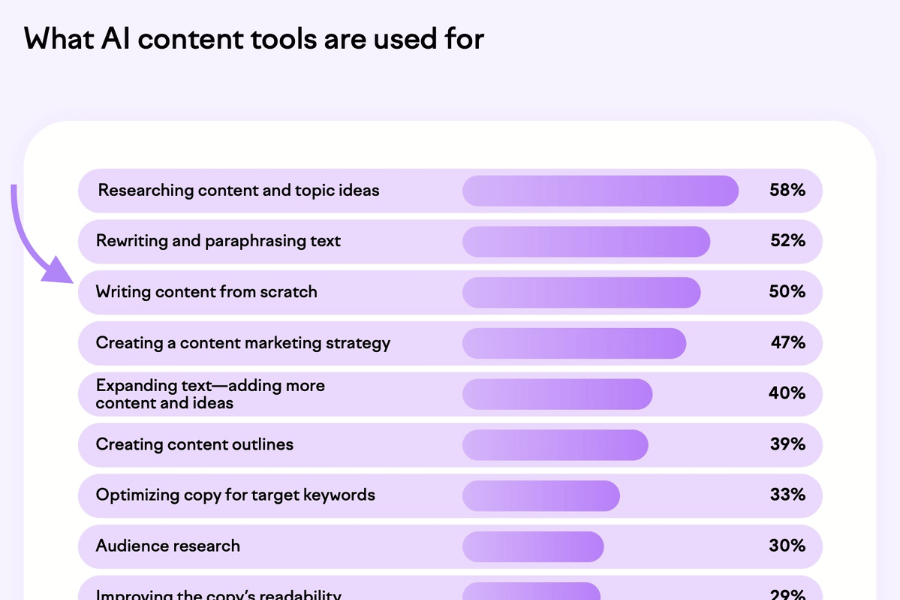
Using AI tools for SEO research while keeping authentic and original content
Using AI tools without losing authenticity
AI can help with research and ideation, but keep your authentic voice. Readers and search engines reward originality.
Expanding SEO presence across platforms
- YouTube: second-largest search engine
- Reddit: community-driven discovery
- Google Business Profile: essential for local visibility
- Voice search: optimize for conversational, question-based queries
Adapting to AI-driven search
Google’s Search Generative Experience (SGE) shows AI summaries directly in results. To stay visible, structure your content with clear answers, FAQs, and schema markup.
If you’re working in SaaS, check out this SaaS SEO strategy guide for specific tactics.
Conclusion
Creating an SEO strategy isn’t about following a rigid checklist—it’s about building a living framework that evolves as your business and audience grow. When done right, SEO becomes one of the most cost-effective ways to drive sustainable traffic, leads, and revenue.
If you’re ready to take your digital presence to the next level but aren’t sure where to start, let Golden Owl Digital help. Our team of SEO experts can craft a custom strategy tailored to your goals, whether you need a full SEO audit, technical optimization, or a content plan that converts. Reach out today and start building long-term growth with SEO that works.

